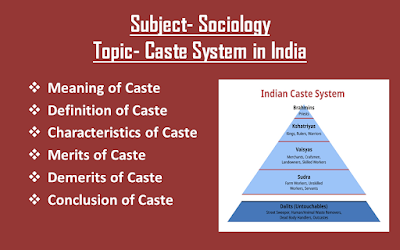Religious Institutions- Meaning, Definition, Characteristics and Functions
Religious institutions are organized systems that promote, preserve, and practice religious beliefs, values, and traditions.
Religious institution can be defined as the belief of person in the existence of supernatural being.
Examples include churches (Christian), mosques (Islamic), temples (Hindu, Buddhist, etc.)
# Definition of Religious Institutions
1. According to Emile Durkheim:- "A unified system of beliefs and practices relative to sacred things, that is to say, things set apart and forbidden—beliefs and practices which unite into one single moral community called a Church, all those who adhere to them."
2. According to Max Weber:- "A social organization that cultivates and perpetuates a belief in supernatural powers, and provides a sense of community and belonging for its members."
3. According to Peter Berger:- "Institutions that provide a sacred canopy, a sense of meaning and purpose, and a moral framework for individuals and groups."
4. According to Robert K. Merton:- "Social structures that provide a sense of community, moral guidance, and spiritual support for individuals and groups."
# Characteristics of Religious Institutions
1. Belief system:- Religious institutions are built around a shared set of beliefs, teachings, and principles that guide members' understanding of the world and their place in it.
2. Rituals and practices:- Regular worship services, sacraments, ceremonies, and observances provide a sense of continuity and connection to the divine or transcendent.
3. Sacred texts:- Revered writings, such as holy books or scriptures, provide guidance, inspiration, and a sense of connection to the divine.
4. Organizational structure:- Religious institutions have a formal leadership and governance system, such as a hierarchy of clergy, councils, or denominations, to manage and guide the community.
5. Community and belonging:- Religious institutions offer a sense of shared identity and belonging among members, who often share common values and experiences.
6. Moral guidance:- Religious teachings and principles guiding members' ethical behavior and decision-making.
7. Symbolism:- Sacred symbols, images, and objects convey spiritual meaning and connect members to their faith tradition.
8. Traditions and customs:- Established practices and observances, such as holidays and rituals, connect members to their faith heritage.
9. Spiritual leadership:- Religious leaders, such as clergy or gurus, provide guidance, support, and interpretation of spiritual teachings.
10. Social service and charity:- Religious institutions often engage in community service, charity, and social justice initiatives, reflecting their values and teachings.
11. Rites of passage:- Ceremonies marking important life events, such as birth, coming of age, marriage, and death, provide spiritual significance and community support.
# Functions of Religious Institutions
1. Spiritual guidance:- Providing spiritual direction, support, and comfort to members.
2. Community building:- Fostering a sense of belonging, community, and social connection among members.
3. Moral education:- Teaching moral values, principles, and ethics to members.
4. Rituals and practices:- Conducting regular rituals, ceremonies, and practices that reinforce beliefs and create a sense of continuity.
5. Emotional support:- Offering emotional support, counseling, and comfort during life's challenges.
6. Social service:- Engaging in social welfare, humanitarian, and charitable activities.
7. Cultural preservation:- Preserving cultural heritage, traditions, and customs.
8. Personal transformation:- Facilitating personal growth, transformation, and spiritual development.
9. Conflict resolution:- Providing a framework for resolving conflicts and disputes within the community.
10. Socialization:- Socializing members into the community's values, beliefs, and practices.
11. Legitimization:- Providing a sense of legitimacy and authority to members' beliefs and practices.
12. Worship and devotion:- Providing a space for collective worship, devotion, and spiritual expression.
13. Education:- Offering educational programs for members, including religious education and leadership development.
14. Advocacy:- Advocating for social justice, human rights, and community welfare.
Watch video on YouTube





